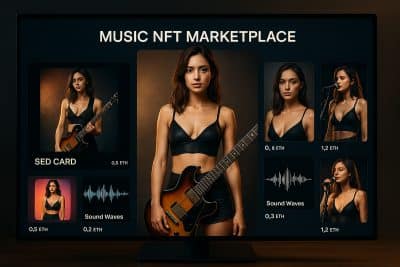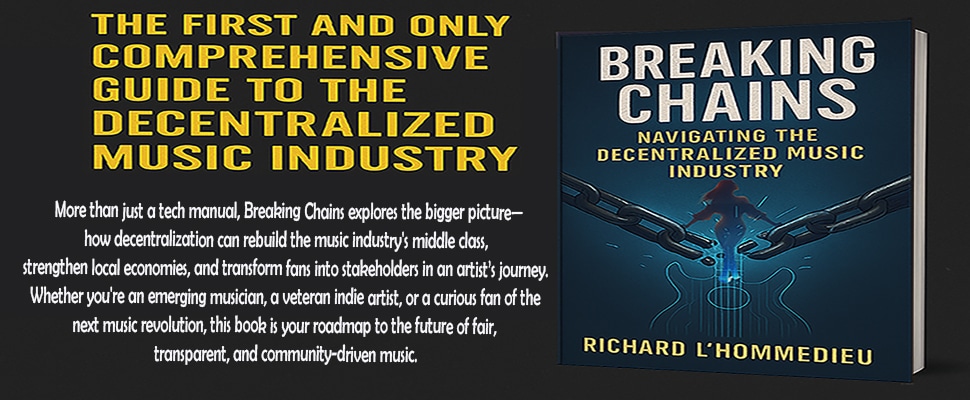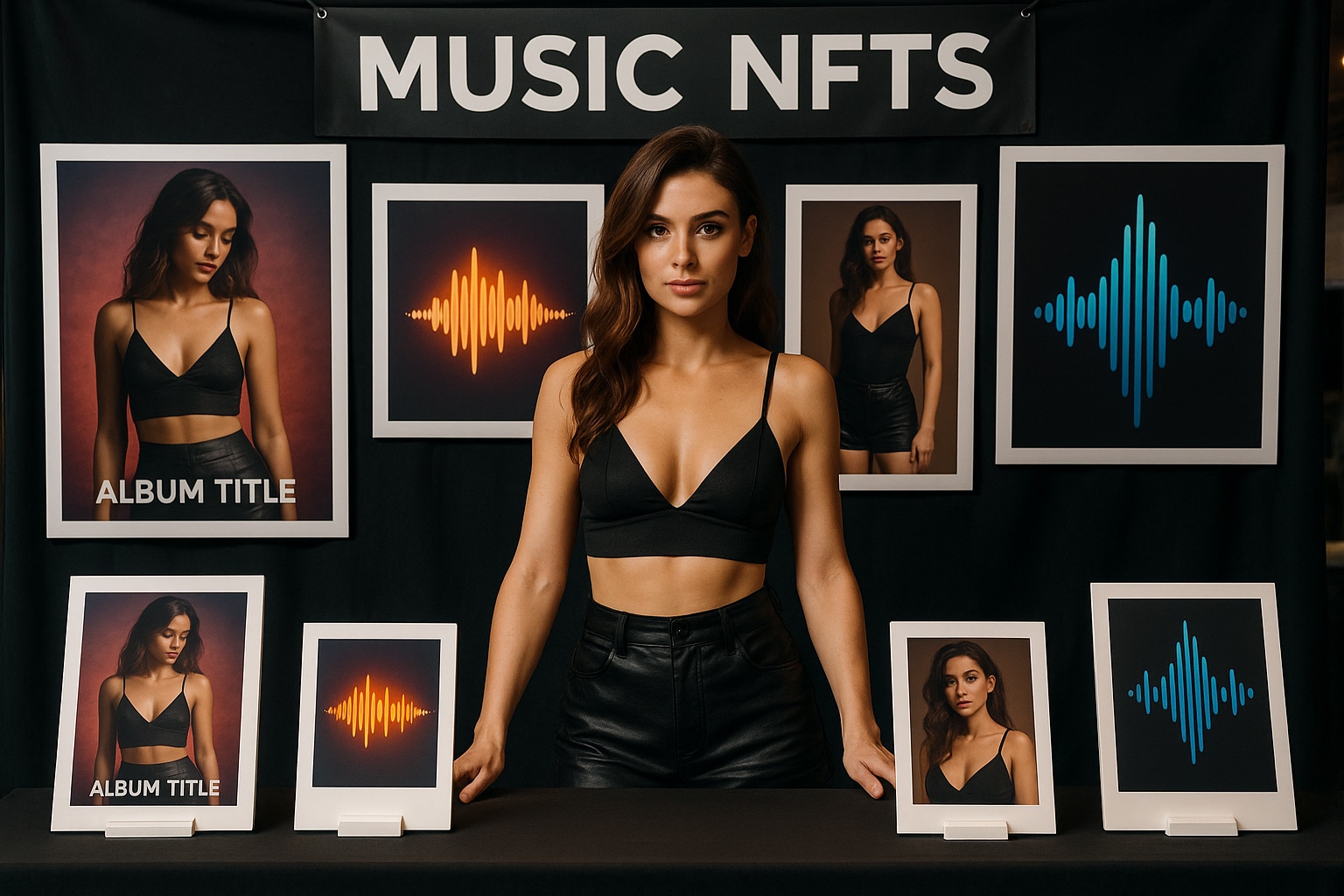Building Your Own Music NFT Marketplace
Building Your Own Music NFT Marketplace: A Comprehensive DIY Guide for Indie Musicians
 If you’re an indie musician eager to gain more control over your music distribution and deepen connections with your fans, creating your own NFT marketplace might be the perfect strategy. NFTs (Non-Fungible Tokens) have transformed how digital art, music, and collectibles are owned and sold, offering musicians direct interaction with fans and better financial returns. Even if blockchain technology seems intimidating, this guide simplifies the process by clearly outlining each step and providing resources to help you confidently build your own music NFT marketplace.
If you’re an indie musician eager to gain more control over your music distribution and deepen connections with your fans, creating your own NFT marketplace might be the perfect strategy. NFTs (Non-Fungible Tokens) have transformed how digital art, music, and collectibles are owned and sold, offering musicians direct interaction with fans and better financial returns. Even if blockchain technology seems intimidating, this guide simplifies the process by clearly outlining each step and providing resources to help you confidently build your own music NFT marketplace.
Step 1: Understanding Web3 and Crypto Wallet Essentials
Before building your NFT marketplace, it’s important to understand the basic concepts of Web3. Think of Web3 as the next stage of the internet, where decentralization, blockchain technology, and digital ownership reign supreme. To start your journey, you’ll first need a crypto wallet, which acts like a secure digital bank account. MetaMask (metamask.io) is recommended due to its user-friendly interface and compatibility with many Web3 services.
Once you set up MetaMask, selecting the right blockchain network is your next crucial step. Networks such as Polygon (polygon.technology) or Base (base.org) are great choices because they offer significantly lower transaction costs (known as gas fees) compared to others like Ethereum. Lower fees mean you can release multiple tracks or limited editions affordably, maintaining profitability for your NFT sales.
If you’re brand-new to blockchain transactions, try minting some test NFTs on Polygon’s Amoy testnet first. Testnets allow you to practice transactions risk-free using simulated funds, helping you get comfortable with the process before using real money.
Step 2: Securely Hosting Your Music Files Permanently
Your music NFTs are valuable digital assets that need secure and permanent storage. Regular hosting services pose risks—files can disappear if a server goes offline or a company shuts down. To avoid these problems, use IPFS (InterPlanetary File System), a decentralized storage solution designed to keep your files permanently accessible.
Pinata (pinata.cloud) simplifies this process, making it accessible even to those unfamiliar with technology. To use Pinata, simply drag and drop your music files, artwork, and metadata onto their platform. Pinata then generates a unique content identifier (CID) for each file. These CIDs serve as permanent links to your media, ensuring that your NFTs remain secure and accessible indefinitely. Store these identifiers safely, as they’ll be essential when linking your NFTs to their respective files.
Step 3: Selecting Your Ideal Marketplace Creation Tool
Depending on your technical skills and comfort level, several options are available for creating your NFT marketplace:
- No-Code Solution (Mintplex): Ideal for beginners, Mintplex (mintplex.xyz) requires zero coding experience. Simply connect your MetaMask wallet, upload your files, and set royalties. Mintplex automatically handles backend processes, creating both your smart contract and minting webpage. This user-friendly option gets your marketplace up and running swiftly, perfect for those new to NFTs.
- Low-Code Solution (thirdweb): If you desire more customization without intensive coding, thirdweb (thirdweb.com) strikes the right balance. It offers user-friendly tools and audited smart contracts, making integration straightforward. You retain control over features like branding, royalties, and accepted NFT types, albeit with slightly more complexity than Mintplex.
- Fully Custom (Zora or Hardhat): Experienced users who seek full creative and functional control can choose open-source solutions like Zora or create contracts with Solidity using Hardhat (hardhat.org) alongside OpenZeppelin libraries (openzeppelin.com). Chainlink provides thorough tutorials to guide you through creating advanced marketplaces, supporting custom features such as auctions and royalties. Although requiring programming knowledge, this method allows for ultimate flexibility and customization.
 Step 4: Deploying Your Smart Contract
Step 4: Deploying Your Smart Contract
Deploying a smart contract makes your NFT marketplace official on the blockchain. Here’s how you do it:
- Choose a meaningful token name (like “IndieAnthem2025”) and a concise token symbol (such as “IAX”).
- Set your royalty percentage—typically 5%-10%, ensuring revenue from secondary sales.
- Deploy your smart contract using MetaMask on your selected network (Polygon or Base). This incurs minimal transaction fees.
- Record the contract address provided by MetaMask. This address represents your marketplace publicly and is essential for NFT creation.
After deployment, verify your smart contract publicly using platforms such as polygonscan.com or basescan.org. Verification demonstrates transparency, building trust with collectors by showing that your marketplace is reliable and secure.
Step 5: Creating an Engaging User Interface
For Mintplex users, a frontend interface is provided automatically. If you’re using thirdweb or Zora, you’ll need to create a user-friendly interface using tools like Next.js and the thirdweb React SDK. These platforms provide intuitive templates and integrations, ensuring an attractive, engaging user experience. Add wallet connection buttons using RainbowKit or wagmi, clearly present listings, and simplify minting processes.
To enhance accessibility, consider securing a memorable domain from Namecheap or using ENS domains (like yourband.eth), making your marketplace easy to find and share.
Step 6: Comprehensive Testing to Ensure Reliability
Thorough testing ensures your marketplace functions smoothly for users. Mint test NFTs, purchase and resell them, and verify correct royalty distribution. Involve a few trusted friends or fans to test transactions as well. Address any issues discovered promptly to provide a seamless experience when your marketplace launches.
Step 7: Strategic Marketplace Launch and Promotion
Effectively promote your marketplace launch through social media, email campaigns, and live-streamed events. Platforms like Sound.xyz or Discord provide excellent spaces for hosting real-time NFT drops, creating excitement and community engagement. Clearly articulate the unique benefits and exclusivity of your NFTs to encourage active fan participation.
Step 8: Regular Maintenance and Ongoing Updates
To ensure continued security and functionality, regularly update your marketplace. Stay informed about updates from thirdweb and OpenZeppelin. Regularly back up your metadata and CIDs in accessible locations (such as CSV files or cloud services like Notion). Monitor network transaction costs, and if necessary, consider migrating NFTs to other affordable networks.
Essential Tools and Resources:
- MetaMask: metamask.io
- Networks: Polygon (polygon.technology), Base (base.org)
- File Hosting: Pinata (pinata.cloud)
- Marketplace Builders: Mintplex (mintplex.xyz), thirdweb (thirdweb.com), Zora (zora.co)
- Development Tools: Hardhat (hardhat.org), OpenZeppelin (openzeppelin.com), Chainlink (chain.link)
- Frontend Tools: RainbowKit (rainbowkit.com), wagmi.sh
- Domain Providers: Namecheap.com, ENS.domains
- Contract Verification: Polygonscan.com, Basescan.org
By following this guide, you’ll establish greater control over your musical creations, directly engage with fans, and unlock new revenue streams through your personalized NFT marketplace.
Discover more from Making A Scene!
Subscribe to get the latest posts sent to your email.










